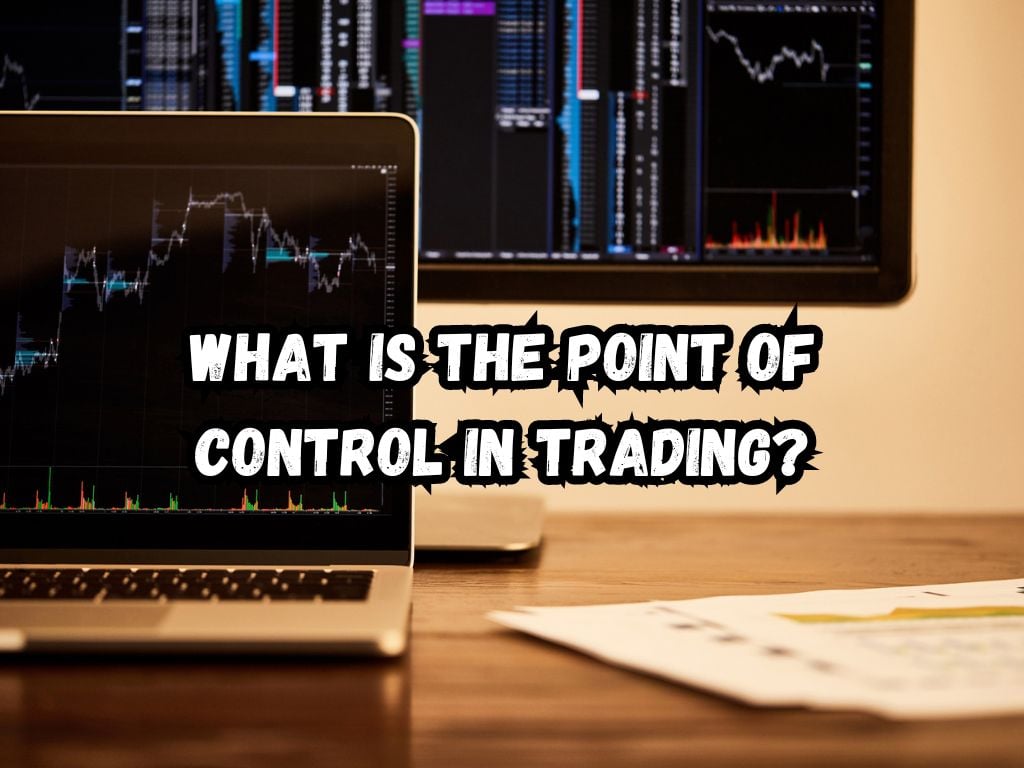In the complex world of trading, understanding market dynamics is key to success. One concept that stands out for its analytic power is the Point of Control (POC).
It serves as a beacon, guiding traders through the murky waters of financial markets. This article shines a light on POC, breaking down its importance and showing traders how to leverage it for better decision-making.
What is the Point of Control in Trading?
Point of Control refers to the price level with the highest trading volume over a specific period. It is a term born from Market Profile theory, which was a game-changing approach to understanding market behavior developed in the 1980s.
At its core, POC offers insight into the value areas in the market, signaling where the most trading activity took place.

Calculating the Point of Control
Calculating POC involves analyzing volume data across different price levels. The goal is to identify where the bulk of trading occurred. Most modern trading platforms offer tools that automate this calculation, providing visual cues on charts.
Volume plays a vital role in this process, as POC is essentially the heartbeat of market activity, reflecting where traders have agreed on price most frequently.
Point of Control and Market Sentiment
Interpreting POC allows traders to gauge market sentiment. A POC shift upwards suggests bullish sentiment, while a move down indicates bearish trends.
Through careful analysis of POC shifts, traders gain insights into the prevailing mood of the market. This knowledge is crucial in anticipating future movements and aligning trades accordingly.
Using POC to Identify Key Levels
POC is not just a reflection of past trading activity; it also points to potential support and resistance levels. Traders use it to fine-tune their strategies, setting more informed stop losses and take profit margins.
By understanding where the bulk of trades occurred, traders can predict areas where price might hesitate or rebound, making POC a powerful tool in risk management.
Advanced POC Trading Strategies
For those looking to dive deeper, combining POC with other technical analysis tools can unveil new strategies. For example, integrating POC analysis with trend indicators or Fibonacci retracements opens up a plethora of entry and exit point identification techniques.
This synergy between tools allows for a more nuanced understanding of market dynamics, enhancing trading strategies.
Addressing Common Questions and Misconceptions
Many traders ask, “Is POC effective in all market conditions?” The answer is complex. While POC offers valuable insights, its effectiveness can vary across different markets and timeframes.
Another common misunderstanding is equating high volume with high POC levels. It’s critical to remember that POC reflects the price at which the highest volume occurred, not the total volume itself.
Pro Tips for Traders
Adopting POC into your trading approach requires practice and patience. Start by observing POC in a variety of market conditions to understand its behavior.
It’s also wise to combine POC analysis with other indicators to build a more rounded view of the market. Finally, always remember the importance of context. POC provides valuable clues, but it’s up to the trader to piece together the puzzle.

Common Pitfalls in Using POC
While the Point of Control is a powerful tool for traders, its effectiveness can be compromised by common missteps. One significant pitfall is over-reliance on POC in isolation.
Traders sometimes expect POC to be a standalone predictor of market movement, but it should be used in conjunction with other indicators and market analysis to paint a complete picture.
Another mistake is ignoring the context of the market. The POC can signal where the most trading activity has occurred, but without considering the broader market trend, traders may misinterpret the significance of this level.
For instance, a POC in a consolidating market might have a different implication than one in a strongly trending market.
Timing is another area where traders stumble. POC reflects historical data, but markets are dynamic. Decisions based solely on historical POC without accounting for real-time factors such as news events or economic releases can lead to poor trading outcomes.
Finally, some traders may not adjust their strategies to different timeframes appropriately. The relevance of POC will vary depending on whether a trader is looking at an intraday chart, daily, weekly, or longer periods. What works on one timeframe may not be applicable to another.
To avoid these pitfalls, traders should use POC as part of a broader system of analysis, remain aware of the market context, respond to new information agilely, and tailor their use of POC to their specific trading timeframe.
By adopting a holistic and adaptable trading approach, one can better leverage POC to identify meaningful opportunities in the markets.
Conclusion
The Point of Control offers traders a window into the market’s soul, revealing where value and consensus have been found. By mastering POC analysis, traders can navigate the markets with greater confidence and precision.
The journey to understanding POC is well worth the effort for those committed to unraveling the complexities of trading.


 Tags:
Tags:










